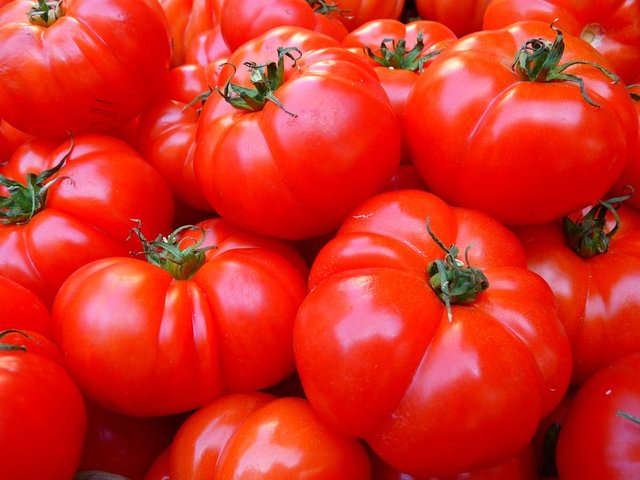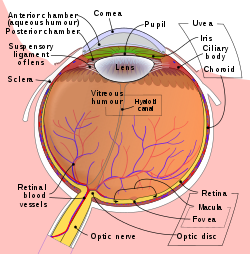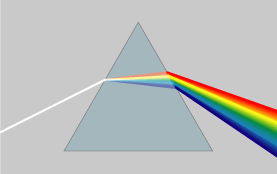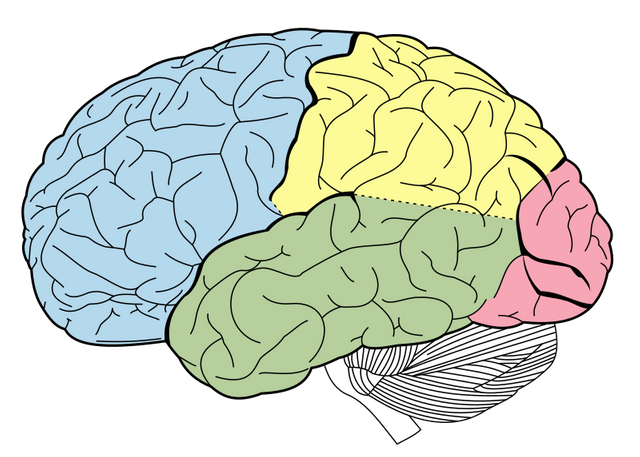Body Pigments [Part 1: How The Eyes Perceive Shapes and Colors]

Lycopene is a biological macromolecule in ripe tomatoes responsible for its bright red coloration
Image Source:Pixabay under CC0 licence
Biological pigments also known as biochromes are responsible for diversity of colors across all living things. The color of blood, of our skins, hair, leaves and flower petals are a result of the presence of these macromolecules. However, nature's intention in most cases is not to make the earth more colorful by the presence of these pigments; although in plants, it is essential especially in flowers to attract insects. In most cases, these molecules have other primary functions. The pigment that causes variation in skin color is known as melanin. Its primary function is to protect the skin from hazardous Ultra-violet (UV) ray emitted by the sun. These molecules help in prevent deeper penetration of ultra-violet (UV) rays. When our skin is exposed to intense sunlight, the skin produce more melanin to combat the UV rays.
To understand how these these pigment produce colors and before diving deep into their biochemistry and physiology, I would like us to be exposed to the physic of color production and how the eyes perceive objects shapes and color.
How Our Eyes Perceive Color

Diagram shows the human eye and different structures that enables one see. The retina is a tissue responsible for sensing visual images, light are focused on the retina by the lens
Image Source:Wikipedia; Author: Rhcastilhos. And Jmarchn; This file is licensed under the Creative Commons Attribution-Share Alike 3.0 Unported license;
However, in absence of total light (complete black out), neither man or any of these animals can see; Shapes and colors of objects are perceived by the eye through the light they reflect. Variation of the colors of these objects depend on how they modify lights that hits them initially. These objects do not produce their own light, they depend on other sources of light. Light is an electromagnetic radiation with a wavelength varying between 400 - 700 nanometers. Different color of light is dependent on the wavelength of the light. Below is a table showing the major colors and their wavelength.
| Color | Wave Length |
|---|---|
| Red | 700 - 635 nanometers |
| Orange | 635 - 590 nanometers |
| Yellow | 590 - 560 nanometers |
| Green | 560 - 520 nanometers |
| Cyan | 520 - 490 nanometers |
| Blue | 490 - 450 nanometers |
| Violet | 450 - 400 nanometers |
White light is a combination of all these colors (It is also called polychromatic light because of this). White light has a wide range of wave length which can be separated with the use of a triangular prism. In Physics, this phenomenon is known as refraction, it is also seen in a rainbow. A rainbow however not only involves refraction of white polychromatic light from the sun but also two other phenomenons- Reflection and Dispersion. These phenomenons are explained further in the sub-heading below (How light Behaves).
How Light Behaves

Refraction and Reflection are similar phenomenons. They both involve change in direction of rays as they hit object or medium. However, reflection rays are in the same medium as sourced while that of refraction are of different medium
Image Source: Wikipedia; Author: Rhcastilhos. And Jmarchn.; This file is licensed under the Creative Commons Attribution-Share Alike 3.0 Unported license.
Refraction: This is a characteristic not limited to light but also to other forms of electromagnetic waves. It occurs when direction of waves changes as it enters a medium. When straight waves passes from air to water or from a shallow water into a deeper water, the waves becomes shorter. When a pencil partially submerged in a glass of water, there is difference in the direction of the pencil in air and in water. This is because the light waves that aid perceiving the pencil has been refracted.
Reflection: Reflection is the change in the direction of a wave as it hits an obstacle. The angle at which the light reaches the object is same with the angle at which it is being reflected. To understand the difference between reflection and refraction, one needs to go a little deeper into physics.It has been established that:
- Light is a wave
- There are other types forms of wave e.g Infrared waves
- These other forms of waves also exhibit reflection and refraction
In reflection, waves bounces back while in refraction, waves pass through mediums which alters the direction of the wave. The light that hits an object is called incident ray. This light can be from a light source such as a lantern, the moon, the sun or other light sources. When these rays of light hits the objects or medium, the direction of the rays changes, this ray with a changed direction is called the refracted ray or incident ray depending on what phenomenon takes place.
In case of reflection, the angle of incidence ray and reflection rays are the same. For instance, light rays hit an object at 35 degree, if the rebound angle (reflected ray) is also at 35 degree, then it is a reflection. An difference in the degree of the first and second rays causes a refraction. Mirrors reflect light while eye lenses refract light. (Further explanation, visit DifferenceBetween.com.

A triangular prism disperses the full spectrum of colors froms a white light
Image Source:Wikipedia; This file is licensed under the Creative Commons Attribution-Share Alike 3.0 Unported license.
Having established that white light is a combination of different other colors, lets study how objects manipulates these colors to produce the color the eye sees. Object absorb light colors in order to produce a specific color: An object appears green to the eyes when it absorbs all the colors on the spectrum of white light exempting the green wavelength. An blue cup absorbs all light of the spectrum except blue. A red object appears red because it absorbs all colors of light except red. Our sky is blue because of the refraction and absorption of light going on among the ozone molecules of the atmosphere. Similarly, an objects will appear black, if it absorbs all the colors of the white light spectrum. If an object does not absorb any color, it will appear white to the eyes.
This phenomenon is the same when colored light are exposed to the objects. The absorb colors normally as they do with white light. An object that absorbs all colors of the spectrum except blue will appear black if a red light is shown upon it. This is because even when there is a white light, it absorbs red light and other colors except blue. A green object will appear green when a green light is shown to it but black when yellow light is shown to it.
An object is transparent if it does not absorb any light but allows the rays to pass through it. This is true of glass and other transparent object.

The pink colored segment of represents the occipital lobe involved in visual interpretations. Other parts include: Yellow- Parietal lobe, Cyan- Frontal lobe, Green- Temporal lobe
Image Source:Wikipedia Public Domain
Impulses produced by the retina in response to light impulses travel through a nerve called the optic nerve. From the optic nerve, the generated impulses travels to the occipital lobe of the brain. The occipital lobe is one of the four major lobes of the cerebrum dedicated to vision processing, other lobes include the frontal lobe dedicated to somatic functions, parietal lobe for sensory function and temporal lobe dedicated to language and auditory functions. There are two occipital lobe in the brain- the right and the left. The right occipital lobe is responsible for processing visuals from the left eye and the left lobe is responsible for visual processing of the right eyes.
Establishing this basic principles, we now understand how objects manipulates light to produce the colors they appear to be. Body pigments also manipulates light rays to appear the way they appear. In my next post, we shall be discussing more in depth on body pigments.
Further Reading:
Image Source:
All images have been sourced immediately after their appearance. Unsourced images are designed by me @damzxyno.


Check out https://steemit.com/@a-a-a
Great information, on how the colors and the eye in general works. At the end of the day is electrical impulses that are governed by our ability to translate the photons that are colliding with our eyes into electrical signals that are conducted into our brains to form images, we also do really complicated calculations to approximate as much as we can on how far things are from us so we can walk and interact with the universe.
It's the miracle of nature! Thank you.
Congratulations @damzxyno! You have completed some achievement on Steemit and have been rewarded with new badge(s) :
Click on the badge to view your Board of Honor.
If you no longer want to receive notifications, reply to this comment with the word
STOPTo support your work, I also upvoted your post!
Ur article is well written and quite interesting... U cited ur images, thats really good.. But I would like to mention that ur images are CC BY-SA 3.0 licensed which requires the attribution of following,
I would suggest u to add the author name and license page link under ur images, that would make ur image citation perfect.
To learn more about image issues, take a look at this article.
Good day...!
Thanks for the info, I really appreciate it.